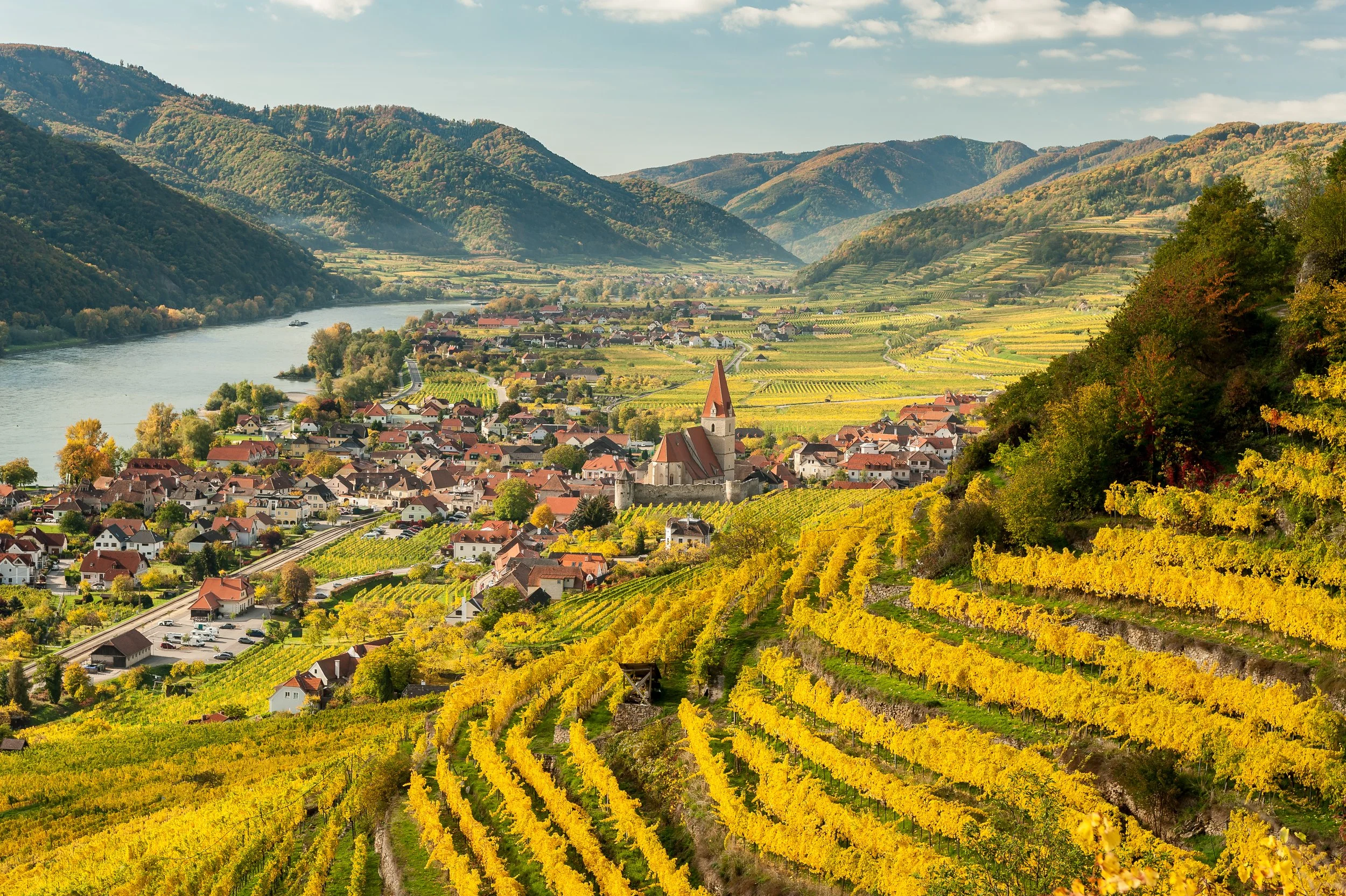Wandering Wachau
The town of Weißenkirchen in der Wachau and the Danube River in the autumn
The Wachau Valley is a picturesque landscape where history and viticulture intertwine to create a wine lover's paradise. This UNESCO World Heritage site, stretching along the Danube River between the towns of Melk and Krems, is not just a scenic wonderland but a testament to centuries-old wine-making traditions.
The Wachau region's wine history dates back to the Roman era, with viticulture thriving under the care of monks during the Middle Ages. The monasteries, with their deep understanding of the land and climate, laid the foundations for the high-quality wine production that characterizes the region today. This rich history is evident in the ancient terraced vineyards that elegantly hug the steep riverbanks, a method developed to maximize the sun's warmth and the river's reflective light.
The Wines of Wachau
The Wachau Valley is renowned for its white wines, with Grüner Veltliner and Riesling reigning supreme. These varietals thrive in the unique microclimate and varied terroirs of the region, from loess and loam to primary rock and sandy soils, each contributing distinct characteristics to the wines.
Grüner Veltliner: This flagship varietal of Austria finds its most elegant and complex expressions in the Wachau. The wines range from light and crisp with lively acidity to rich and full-bodied, often with a distinctive peppery note or hints of green apple and citrus. The warmer sites lend a lush, exotic fruit character to the wine, while the cooler areas impart a more mineral-driven profile.
Riesling: The Riesling from Wachau is celebrated for its purity, depth, and remarkable aging potential. These wines typically showcase a fine balance between sugar and acidity, exuding aromas of peach, apricot, and sometimes tropical fruits. The stony, primary rock soils of the higher terraces imbue the wines with a striking minerality and a crisp, elegant structure.
The Winemaking Process
The process begins with careful handpicking of the grapes to ensure only the highest quality fruit is used. Fermentation is often carried out in stainless steel tanks to preserve the varietal's characteristic freshness and aroma, though some producers also use large, neutral oak casks for certain styles, adding complexity without overshadowing the grape's natural flavors.
A unique aspect of Wachau's winemaking is the classification system based on the must weight (sugar content) of the grapes at harvest.
Steinfeder: Named after the light and delicate Steinfeder grass found in Wachau's vineyards, these are the lightest wines of the region. Steinfeder wines have an alcohol content up to 11.5%, characterized by their fresh, light, and aromatic qualities. They are the epitome of sprightliness, with a gentle body and a refreshing finish, making them perfect for casual sipping or as an aperitif.
Federspiel: This category denotes wines that are a notch up in terms of body and alcohol content, ranging from 11.5% to 12.5%. The term "Federspiel" refers to the falconry once practiced by nobility in the region, symbolizing elegance and precision. Federspiel wines strike a balance between fruitiness and acidity, offering more complexity and structure than Steinfeder, yet retaining a certain lightness. They are versatile, food-friendly wines that reflect the nuanced terroir of Wachau.
Smaragd: Named after the emerald lizards that bask in the sunny, terraced vineyards of Wachau, Smaragd wines are the pinnacle of the region's wine classification. These are the most full-bodied, rich, and complex wines, with an alcohol content above 12.5%. Smaragd wines are made from the ripest grapes, harvested late in the season, and often exhibit intense flavors, deep minerality, and a potential for aging gracefully. They are powerful yet balanced, with a depth of flavor that can include ripe stone fruits, exotic spices, and a long, lingering finish.
Ready to go?
In the Wachau Valley, wine is more than just a beverage; it's a celebration of heritage, a testament to the art of winemaking, and an invitation to explore the depths of flavor and history in every bottle. Whether you're a seasoned connoisseur or a curious novice, the wines of Wachau offer an enriching journey through one of Austria's most cherished wine regions.

